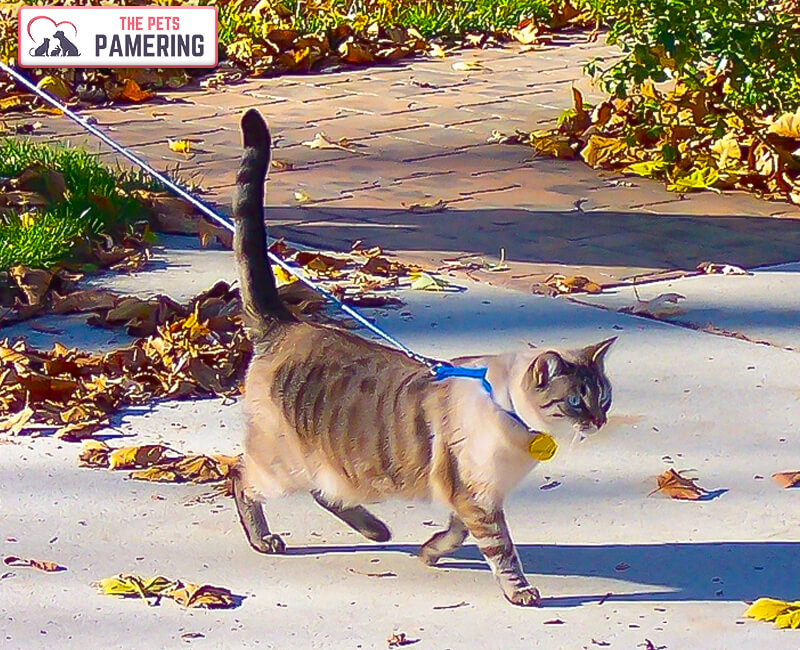How to Train aHow to Train a Cat to Do 5 Life-Changing Things or Yes! You can teach your cat to come when called, use the toilet, and much more—and it’s a lot easier than you might think.Cat training has numerous advantages. Jones explains that “training gives mental and physical stimulation as well as positive social contact.” “The process of training is extremely useful in and of itself for frustrated, bored, shy, and fearful cats.”
Table of Contents
First and very important: Never Punish
Cats are incapable of learning from what some owners consider “discipline.” Worse, “punishing” your cat can cause stress, which can lead to behavioral and health issues, which you don’t want to deal with during cat training. If you’re learning how to train a cat, keep in mind that patience and positive thinking are essential. Trying to figure out what’s going on with your cat? Here are 15 things your cat would like to communicate with you.
How to train a cat to: Come on command
Cats can learn to run in your direction in response to a verbal command. (According to the ASPCA, you could use this technique to bring your cat in if it darts out unexpectedly.) Making an unique noise before feeding—before opening a bag or can—such as loudly calling your cat or clicking your tongue—is the first step in how to educate a cat. When your pet hears that sounds, it will learn to link it with something good (food) and will eventually come running to you. Then, outside of typical feeding times, reward this behavior. Begin with small distances. Make the noise, use your clicker to attract your cat’s attention, and then give your kitty the treat.
Call the cat from a longer distance over time. The ASPCA suggests up to two “cat training sessions” per day, each lasting five minutes or fewer and involving up to 20 repetitions of the activity. By the way, here’s how to tell how smart your cat is.
How to teach a cat to: Use the toilet

It takes some effort to teach a cat to use the toilet, but consider the advantages: You’ll save money on litter and have a cleaner home as a result. To begin, set a litter box next to your toilet. Then slowly pull it up to the top of the seat—you may need a stool to make the operation easier on the cat.Transition to a specific litter box that fits into the toilet once your pet has been accustomed to using a litter box on top of the toilet. (If you buy flushable litter, be prepared for spillage.) Gradually reduce the amount of litter you use until your cat is comfortable doing its business without it, and then get rid of the litter box entirely. If you despise cleaning up cat poop, consider investing in one of these self-cleaning litter boxes.
How to train a cat to: Shake hands
This cat training is much easier than it appears: Prepare a reward, then place yourself with your cat on the same level. When your cat moves its paw, tap it with your clicker while saying “shake.” Rep the training until your cat responds to the “shake” command by offering its paw without tapping. This, like the “come on command” trick, can take a few training sessions spread out over a few days. Your cat will be well-behaved and ready to star in some internet cat memes once you’ve mastered this technique.
How to train a cat to: Beg
This works in the same way as the “shake hands” method. Give a “ask” instruction while holding a reward slightly over your cat’s head. Your cat should stand on its hind legs and reach for the treat; click to mark the behavior, then give your cat the treat. Practice until your cat begs without a treat dangling from the ceiling. If you truly want to understand how to properly teach a cat, make sure to consistently treat your pet—but never feed your cat milk.
How to train a cat to: Walk on a leash

Get a harness with a leash that attaches to the back of the cat rather than the neck. Before putting it on, the ASPCA recommends leaving it out for a few days in locations where your cat frequents, such as its eating area or preferred napping position, so that the animal is used to seeing it. When giving the cat a treat, you’ll next drape the harness over it (without fully fastening it). You’ll soon be able to secure the harness around your cat without the use of a leash—start by leaving it on your cat for a few minutes, then gradually increase the time over several days.Attach the leash to the harness once your cat is familiar with it, and let your cat roam freely inside with it. Start retaining the leash during training after a few days. Then it’s time to relax and enjoy the beautiful outdoors! Allow your cat to explore a new environment at its own pace, and begin in a peaceful location. Make sure you don’t make these typical cat owner mistakes now that you know how to properly train your cat.
Cat Training Don’ts
Discipline has little effect on cats, and they do not learn from it. Swatting, spraying, or frightening your cat may stop him from doing a specific behavior around you, but they will not stop the habit in general. Your presence will be a buzzkill, causing a suspicious cat to be apprehensive of your proximity. That is why it is critical to use positive reinforcement training with your pet.
Jones explains that “the behaviors we witness, especially the ones we don’t like, are how cats communicate.” “Any strategy that is punitive or aimed to reduce a behavior just prevents communication from taking place. Rather of focusing on what you don’t want, focus your training on what you do want.”
